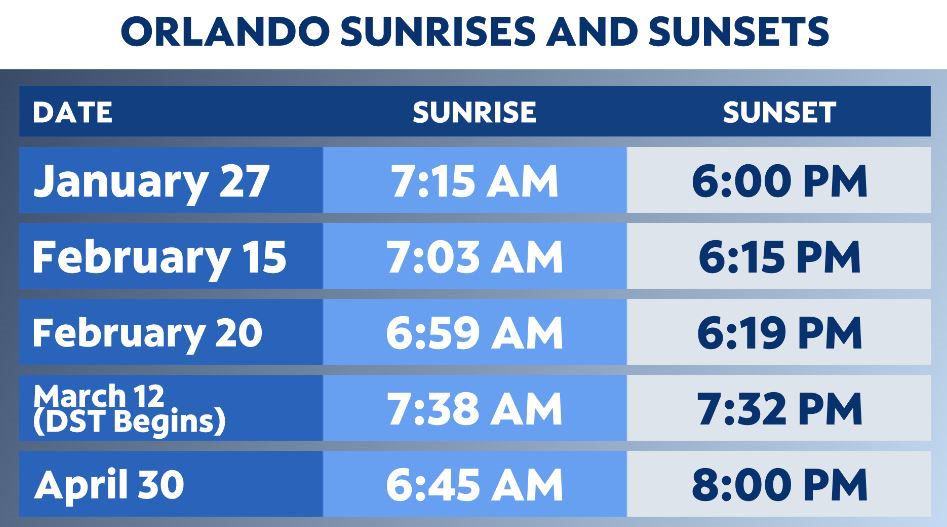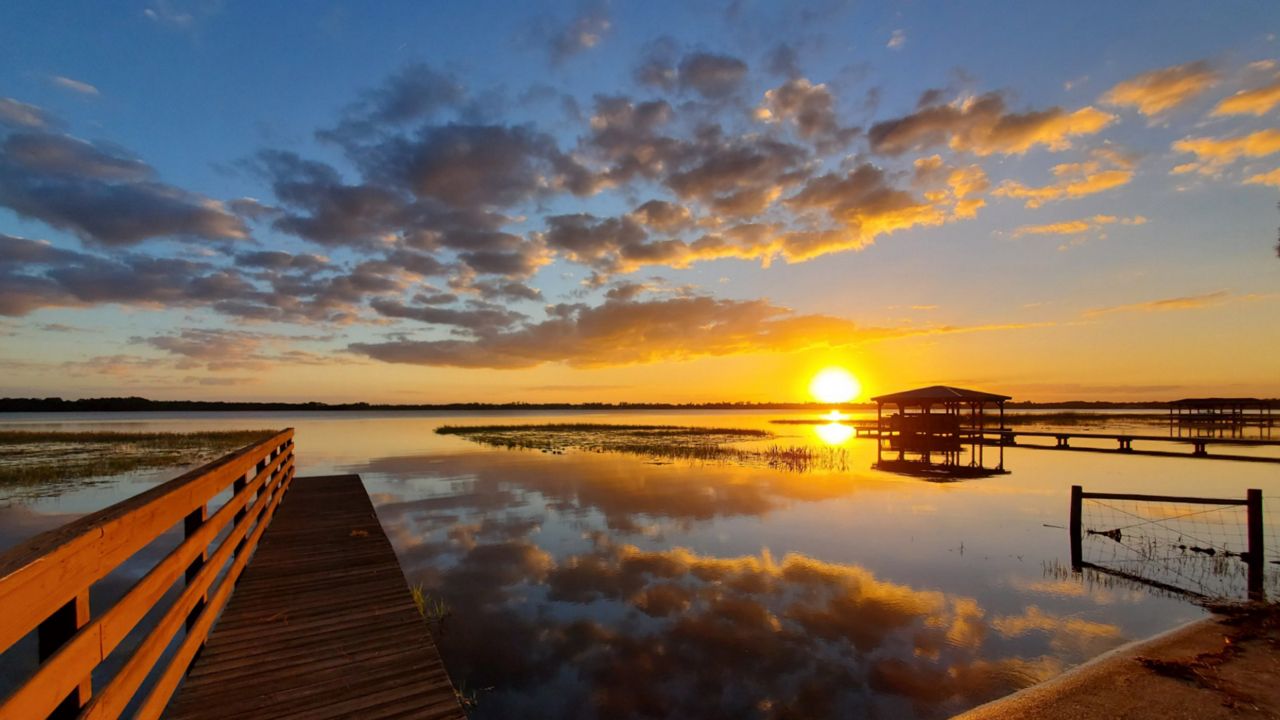We are well past the Winter Solstice, which was on Dec. 21.
This is the shortest day of the year for hours of daylight, but it is not the day that features the earliest sunset in Orlando.
Orlando’s earliest sunset was at the start of December when it set at 5:28 p.m. On Dec. 21, the sunset was shortly after 5:30 p.m.
Since mid-to-late December, Central Florida has gained about more than 19 minutes of daylight.
The number of hours of daylight on the Winter Solstice in Orlando is 10 hours, 19 minutes and 36 seconds.
By the end of January, the amount of daylight jumps to 10 hours, 50 minutes and 2 seconds.
That is an increase of over 30 minutes in a little more than a month.
The first sunset after 6 p.m. is Jan. 27, with the hours of daylight continuing to tick up.

While the sunset continues to get later as dry season rolls along, the sunrises also get earlier leading up to Daylight Saving Time beginning in March.
The first sunrise before 7 a.m. occurs on Feb. 20. The earliest it will ever be before the clocks spring forward is on March 11. This is when it will rise at 6:39 a.m.
Once Daylight Saving Time begins on March 12, the sunrise will be at 7:38 a.m., with the sunset falling at 7:32 p.m.
The Spring Equinox is then on March 22. This is when we get nearly 12 hours of daylight and 12 hours of darkness.
But, the actual day we get the twelve hours of light and the twelve of darkness actually occur on March 16 this year.
This all has to do with the tilt of the earth’s axis, and the position of the earth to the sun.
By the time the Summer Solstice rolls around in June, the hours of daylight will be up to 13 hours, 57 minutes and 40 seconds.
June 20 will be the longest day of the year for daylight, and by the next day, the seconds of daylight will tick back down.
Our team of meteorologists dives deep into the science of weather and breaks down timely weather data and information. To view more weather and climate stories, check out our weather blogs section.



